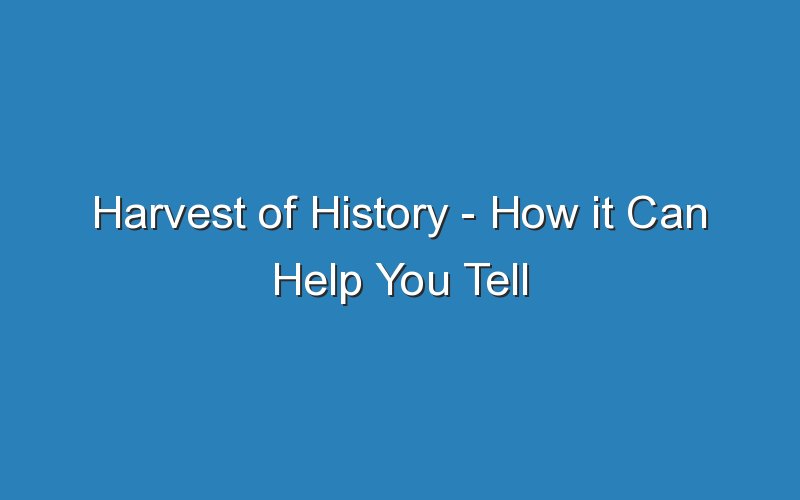A harvest of history can help local historians uncover the forgotten stories of the past. The website Harvest of History contains 16 lesson plans for elementary school students. For example, a teacher can ask a class of fourth graders where their last meal came from. The answer can spark a discussion about the history of agriculture and modern agriculture. Using this resource can help you uncover your community’s forgotten stories. The project is free, so it’s a great way to begin a conversation about the past.
History Harvest has two distinct components: a digital archive and a community-based project. The University of Nebraska-Lincoln began the project by organizing undergraduate-led harvests. Students invited community members to bring artifacts and engage in conversations about their past. The students then captured these items and created a web-based archive of them. The resulting collection of resources can be used in k-12 instruction or life-long learning.
The project was first implemented at the University of Illinois. Since then, it has been used by other institutions and community members across the country. The website hosts an ever-growing community of History Harvest practitioners and interested parties. It includes a collection of syllabi and project models. There’s also a community of people who have volunteered their time to digitize artifacts and share their stories with others. The online archive also helps students create scholarly articles about their community’s past.
The project is a collaborative project, and students from various disciplines can use it to teach history in their own classrooms. The University of Nebraska-Lincoln started the project with a series of undergrad-led harvests that invite community members to submit artifacts and stories. The students then took these artifacts and digitized them, sharing them with the larger community through a web archive. It has expanded to include a growing community of history practitioners and individuals who wish to use the material.
The projects are collaborative and community-based. The University of Nebraska-Lincoln started the project by organizing undergraduate-led harvests in which participants brought in artifacts and stories from their community. They collected these materials through a process of community engagement. These students then transcribed these oral histories into a web-based archive. The project is aimed at preserving and presenting local history. The online archive provides material for historical study and can be used in K-12 classrooms and for lifelong learning.
The University of Illinois’ History Harvest aims to create a digital archive of local histories through community-based projects. They partner with community members and other institutions in the target communities to collect and curate historic artifacts and stories. The University of Nebraska-Lincoln’s history department leads the project, with help from advanced undergraduates who document the history of local communities. This project allows for greater access to historical stories. The history content they create will be available to the public in a variety of formats, including online, print, and video.
A collaborative public history project such as History Harvest at the University of Illinois works with community members to capture and preserve their stories and artifacts. The project also involves students who are able to engage with community members and gather information to provide historical content and context for the community. Besides preserving historical materials, History Harvest has also collected stories and artworks, which will be published as a digital collection. This material can be used by researchers, teachers, and the public.
The project has been widely replicated in a number of places around the world. A number of universities have used the method in their own classrooms. In addition to collecting stories, History Harvest also collects artifacts, and extensive reference materials. In order to create a digital archive, the University of Nebraska-Lincoln hosted a public day at which community members shared personal artifacts and personal objects. The participants were encouraged to share their stories with the students, who then digitally captured and uploaded them into a web-based archive.
The University of Illinois has been a leader in this innovative public history project since its launch in 2009. It is a unique project that works with community members and collects historical materials to help students research and write about history. The program’s success has also inspired other institutions to create their own version of History Harvest. The site has a growing community of History Harvest practitioners and is a hub for resources and syllabi. It has been adapted to meet the specific needs of different audiences.

